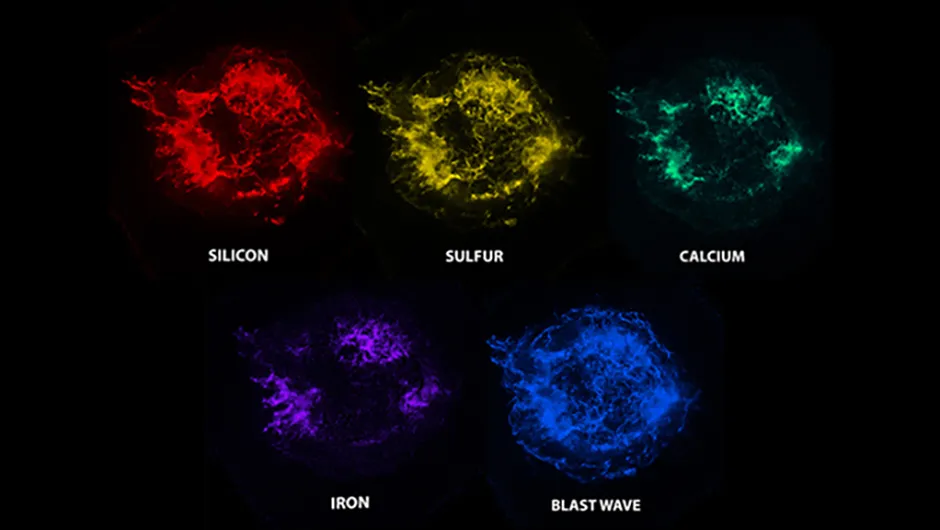“We are made of star stuff”, wrote the late cosmologist Carl Sagan.While this statement may be incredibly poetic, it is also scientifically accurate.
In fact, most of the essential elements that form life and the Universe around us are forged in the furnaces of stars, as well as in the explosions known as ‘supernovae’ in which some stars end their lives.
Astronomers study supernova remnants – the remains of these stellar explosions – to learn more about how stars produce and distribute the elements that make up much of the Universe.
One of the most studied supernova remnants is Cassiopeia A, which glows in X-ray light in this new image captured by the Chandra X-ray Observatory.
In fact, each colour in the image above represents a different element.
Silicon is red, sulphur is yellow, calcium green, iron purple and the blast wave of the explosion is represented in blue.

Studies using Chandra revealed that Cassiopeia A contains iron of a mass equivalent to about 70,000 times the mass of Earth.
Astronomers also detected about one million Earth masses of oxygen being ejected in space by the supernova remnant.
Cassiopeia A has dispersed about 10,000 Earth masses of sulphur and about 20,000 Earth masses of silicon.
Carbon, nitrogen, phosphorus and hydrogen have also been detected.
To put this into perspective, all of the oxygen in the Solar System comes from exploding stars, as does about half the calcium and about 40 per cent of the iron.
Astronomers think that the explosion that created Cassiopeia A happened around the year 1680.
It is estimated that the original star was about five times the mass of our Sun before it exploded, but originally began life with a mass about 16 times that of the Sun.
